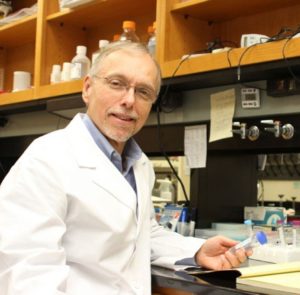
An international team of investigators have discovered that non-neuron brain cells called oligodendrocytes contribute to approximately one-third of plaque formation alongside that produced by neurons in mouse models of Alzheimer’s disease, according to a recent study published in Nature Neuroscience.
The findings challenge the current understanding of Alzheimer’s disease and may inform the development of new targeted therapies that reduce amyloid plaque formation, according to Robert Vassar, PhD, the Davee Professor of Alzheimer Research and director of the Mesulam Center for Cognitive Neurology and Alzheimer’s Disease, who was a co-author of the study.
“The majority of amyloid is still coming from neurons, but there is still a significant portion of amyloid that is coming from the oligodendrocytes, about 30 percent. This identifies oligodendrocytes as a significant contributor to amyloid in the brain” said Vassar, who is also a professor of Cell and Developmental Biology and the scientific director of Behavioral Neurology in the Ken and Ruth Davee Department of Neurology.
In 2023, approximately 6.7 million Americans were living with Alzheimer’s disease, according to the Centers for Disease Control and Prevention. Frequently observed alongside Alzheimer’s disease is the abnormal build-up of amyloid-beta proteins, which form plaques around neurons. However, previous work, including research led by Vassar, found that not all amyloid is produced by neurons.
To determine what other cell types contribute to amyloid production, Vassar and colleagues set out to study oligodendrocytes, a type of glial cell that produces myelin sheaths which wrap around axons and help them send electrical signals to different neurons.
In the study, investigators used RNA sequencing to study amyloid production in mouse models of Alzheimer’s disease in which the BACE1 protein — an established amyloid-producing enzyme — was knocked out from oligodendrocytes in the mice brains.
Overall, the investigators observed a 30 percent reduction of amyloid in the BACE1-knockout mice compared to controls. In a repeated experiment, the investigators knocked out BACE1 in excitatory neurons in mouse models of Alzheimer’s disease, which reduced plaque production by approximately 95 percent.
“The neurons are the ones that get the ball rolling in terms of the amyloid plaque buildup in the brain, but they reach a particular threshold and once that threshold is met the oligodendrocytes make a powerful contribution to the accumulation of amyloid,” Vassar said.
Future therapeutic approaches that target oligodendrocytes may help prevent the buildup of amyloid, Vassar said, however these therapies would also need to cross the blood-brain barrier.
“It would be interesting to further explore the role of the oligodendrocytes as a therapeutic target and try to figure out if we can specifically target BACE1 in the oligodendrocytes in a way that would be amenable to a gene therapy approach in humans,” Vassar said.
Katherine Sadleir, PhD, research associate professor of Neurology in the Division of Behavioral Neurology, was a co-author of the study.
This work was supported by open access funding provided by Max Planck Society.






